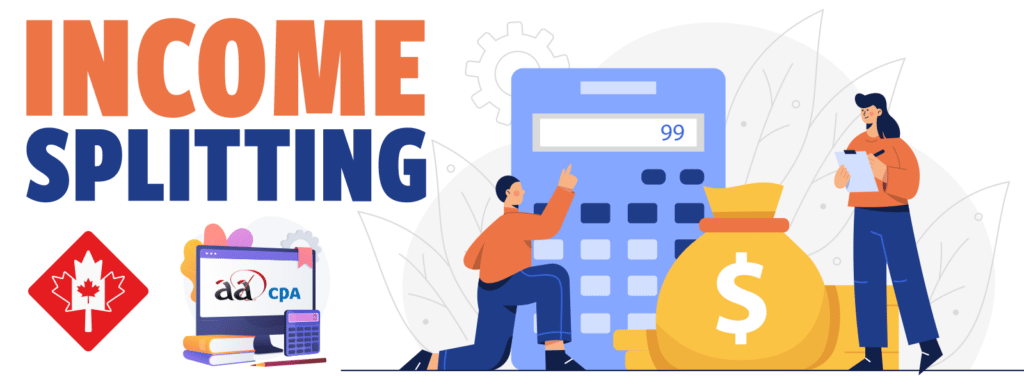
Canadian Income Splitting Rules and Information
Income splitting refers to splitting the income received from a corporation among family members. This was used to reduce tax owed if those family members were taxed at a lower rate than the primary individual. The government put measures in place to limit this activity such as the “kiddie tax”. This involved taxing dividends paid to children at the highest rate but now taxes more types of income and can also cover adults.
Further expansions of the split income rules include expanding the tax to amounts received by adults. This includes dividends or interest paid by a private corporation to an individual from a related business, unless it falls under a specific exclusion.
Income Splitting Exclusions
Adult Individuals: Excluded Business
Amounts that come from a related business where the individual was engaged actively on a regular, continuous and substantial basis are excluded from the income splitting rules.
This means that they are “Actively Engaged” and involves meeting this criteria. They should have worked in the business for at least an average of 20 hours per week during the portion of the tax year of the individual that the business operates, or in any of the five prior years.
Individuals Age 25 or Over: Excluded Shares
Income or taxable capital gain from selling excluded shares or a payment that is a reasonable return fall under another exclusion. To fall under this exclusion:
- Less than 90% of the corporation’s business income should be from services and the corporation is not a professional one.
- The shares represent 10% or more of the votes and value of the corporation.
- Finally, the income of the corporation is not from another related business in respect of the individual other than a business of the corporation.
Individuals Age 25 or Over: Reasonable Return
These payments are reasonable returns for the individual and fall under the exclusion if any of this criteria is met:
- The work performed is in support of the related business.
- The property contributed directly or indirectly in support of the related business.
- There were risks taken in respect of the related business.
- The total amounds paid or payable by anyone to or for the benefit of the individual in respect of the related business.
Income Splitting for Individuals Between the Ages of 18 – 24
Safe Harbour Capital Return: Return on property that was contributed by the individual to support the related business and doesn’t exceed a set capital return than can be dervided by formula can be excluded.
Arm’s Length Capital: For an individual’s property that is not derived from property income in respect to a related business, borrowed under a loan, or is transferred/inherited from a related person, the amount can fall under an exclusion as well.
With tax season coming up, it is crucial to prepare and consult with an accounting professional if you aren’t sure on how the CRA will tax your income. Before attempting any form of income splitting, get advice on what the best way to obtain income from a related business with an accountant. For more information, visit the CRA’s section on Income Splitting by clicking here.